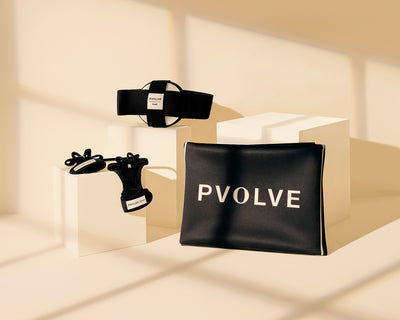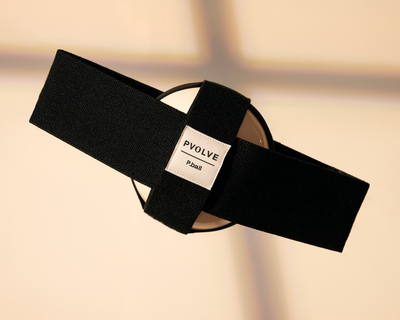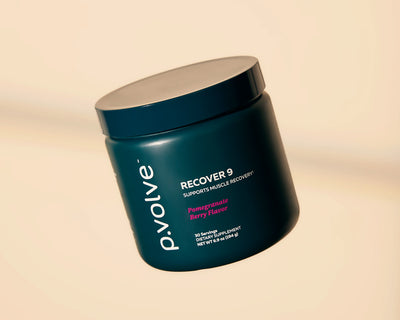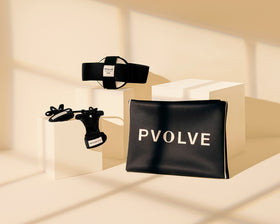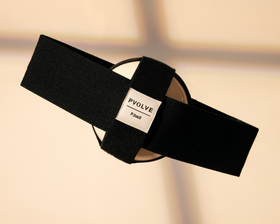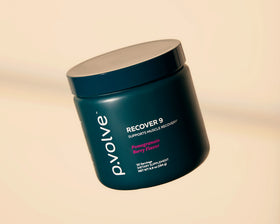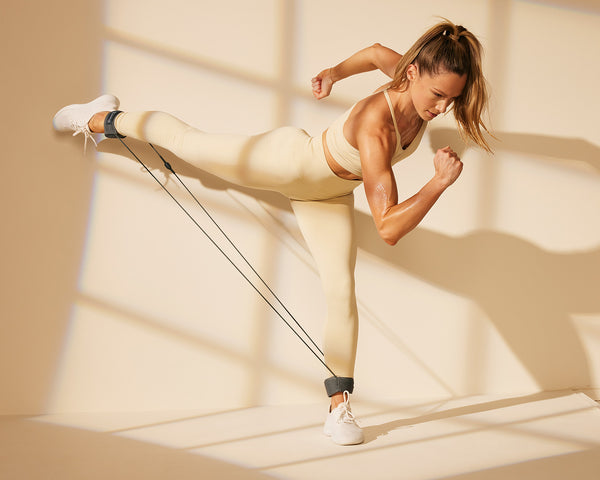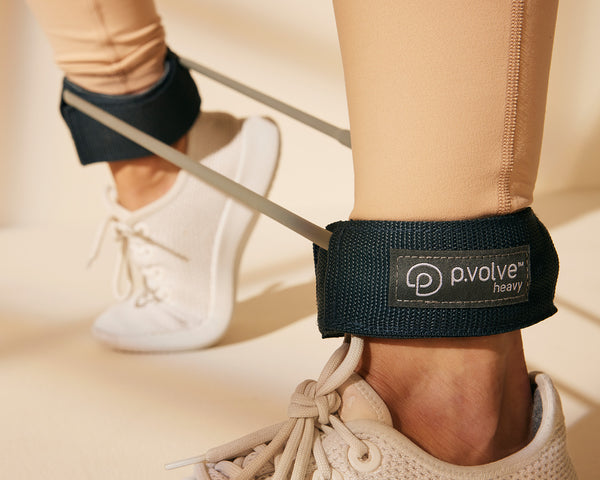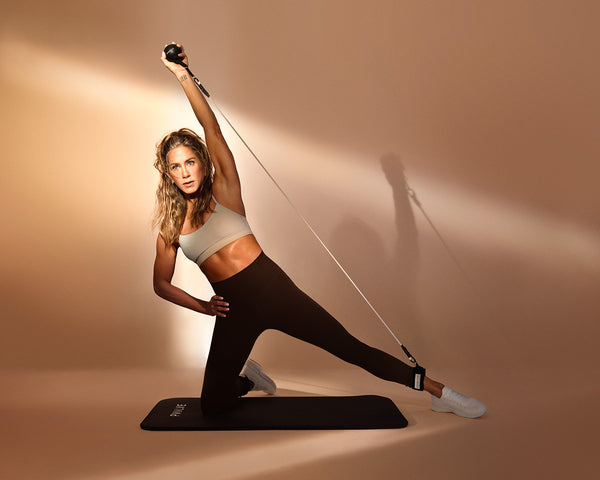When your back hurts, even everyday movement can feel impossible. And while you may have your own ways to get through the pain—heat, rest, medication, stretching—one way to prevent lower back pain is to strengthen your body, particularly your core.
“Exercise is essential in improving lower back pain, since the vast majority of lower back pain is caused by improper movement and muscle patterns,” says Dr. Amy Hoover, Doctor of Physical Therapy, Chief Physical Therapist, and member of Pvolve’s Clinical Advisory Board. “If we teach our bodies how to move correctly and support proper muscle patterns, we protect our joints (including the spine) and prevent injury.”
Pvolve’s 15 Minute Lower Back Strengthening workout video features lower back pain exercises to help you realign your spine, and strengthen your core, back muscles, hamstrings, and glutes while also stretching your hip flexors. It's a workout built for all-over strength and conditioning that may help anyone with lower back pain feel stronger.
Best Lower Back Exercises
The best exercises for lower back pain are ones that not only strengthen your back and surrounding musculature, but also feel good while doing them. These moves target key areas including back, core, glutes, hamstrings, and hips, building strength while also providing a nice stretch. You can do these lower back pain exercises at home or the gym, as part of your daily routine or as an add-on to another favorite workout.These exercises focus on functional movement, which helps you move better in the world outside your workout, either by mimicking the movements you do in everyday activity, or by strengthening the muscles necessary to do them—and, often, by simultaneously sharpening your mind-to-muscle connection so you can move more freely and feel more open in your body all day, every day. Functional movement is at the heart of the Pvolve Method. Pvolve uses sequencing that weaves in all these elements to unlock your body so it can move the way it was designed to.
Our Method takes you through your full range of motion, calling on internal and external rotations and all three planes of motion—forward, backward, and side to side—to create more strength and length in your body. With these five lower back pain exercises, we’ll help you find neutral spine for proper alignment, show you how to do a proper articulated bridge, strengthen and stabilize your core, unlock back and hip tightness, and strengthen all the muscles in the back, improving balance at the same time.
You won’t need any special equipment for these five best exercises for lower back pain, just a mat (if you’ve got one) or a rug for a little bit of padding.
Neutral Spine
To effectively work your core to keep your lower back healthy, it’s important to identify. Working in neutral will train all the muscles of the back in an anatomical correct position to best support low back health. While there is a natural S-curve to the spine, it’s important not to be too arched or tucked under through the lower back. Neutral spine is right in the middle.
To do: While standing—preferably in front of a mirror—try arching your back so that your backside sticks out, then tucking your pelvis to straighten your spine. Repeat a few times, making the movements more subtle until you’ve split the difference to find your neutral spine position.
Bridge
Strengthening the hamstrings and glutes may be helpful to those with lower back pain, especially if you have an anterior pelvic tilt and tend to stand with a hyper-arch to your lower back, as many of us do.
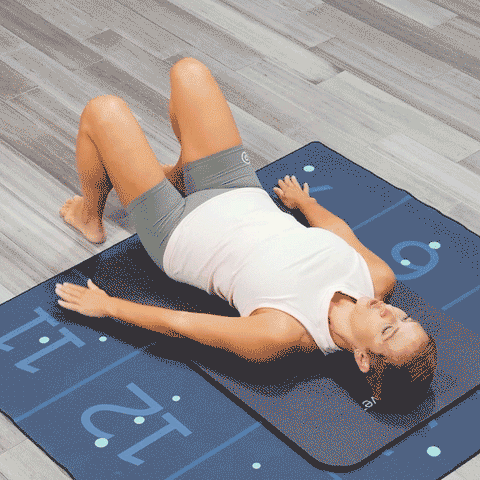
To do: Laying on the ground, with knees bent and feet flat on floor near backside, hip-width apart, press into your feet and roll up through your spine, beginning with the tailbone and extending up your back to create space and length through your vertebrae. As you drive your hips into the air without arching your back, actively press your heels into the floor and reach your knees forward to activate your glutes and hamstring muscles. Then roll gently back down to the floor, starting with upper back and slowly lowering until your tailbone touches the ground.
Modification: If you have any disc herniations, lift and lower back in one move, rather than articulating through the spine one vertebra at a time.
Toe Taps
Toe taps work your abdominals, which are an important part of core strength and protecting the lower back.

To do: Lying on your back on the floor, knees bent and feet flat on floor near backside, keep bend in one leg as you raise it up so the shin is horizontal, then lower to tap the floor with toes. As that leg lowers to ground, raise opposite leg in same way, alternating toe taps on floor so that both feet are never on floor at same time. Keep a neutral spine throughout the move, feeling your abdominals brace together and create a corset-like feeling through the front of the abdominal wall to strengthen your abdominals.
Modification: Return one foot completely to ground before raising opposite leg.
Hip Flexor Stretch
Tight hip flexors from sitting at a desk for prolonged periods of time could be one reason for lower back pain. Opening up the front of the hips can help alleviate back tightness and should be part of anyone’s routine if they suffer from lower back pain.
To do: Get down on all fours, palms down and arms beneath shoulders, knees on floor beneath hips, feet flexed or neutral. Bring one leg straight out to back of mat, toes on ground, then shift back so that pelvis is slightly behind knee, and hands are now in front of shoulders rather than directly beneath. Then shift your pelvis forward to feel a long stretch through the front of the hip, squeezing your glutes to deepen the stretch.
Bird Dog
You are engaging the posterior chain of the body and strengthening all the muscles of the back body with this move.
To do: Get on all fours, palms down and arms beneath shoulders, knees on floor beneath hips, feet flexed or neutral. Maintaining a neutral spine, extend one leg straight back behind you while raising the opposite arm out in front of you, lifting and lowering each limb in sync. Focus more on lengthening raised leg and arm away from your body, rather than focusing on how high you can go. Return to floor and raise and lift opposite leg and arm.
Modification: Keep hands on floor, alternating lifting and lowering legs only.
Back Strengthening Series
Pvolve's Back Strengthening Series is the first workout collection clinically proven to treat lower back pain.* Our 6-class series featuring low-intensity lower back pain exercises was created by Dr. Amy Hoover, Doctor of Physical Therapy and member of Pvolve’s Clinical Advisory Board and Antonietta Vicario, Chief Training Officer for maximum results and safety.Preliminary results in a University of Minnesota clinical study of adults with chronic lower back pain showed that 12 weeks of the series :
- Significantly reduced pain
- Improved body awareness and strength
- Reduced fearful avoidance of movement
- Enabled a return to everyday activities with less disability
*Although the study has not yet been peer reviewed or published, the University of Minnesota has released a public statement about its main findings available here.
Learn more and sign up today.
